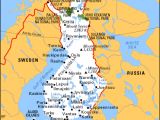The Second World War represents a major watershed in Finnish society. The full extent of damages caused by the conflict was not revealed until after the war, as many problems were solved during wartime by sweeping them under the carpet to wait for a solution. This is, therefore, a crisis of peace.
Post-war life may be as demanding - if not more so - on society than the war itself. It took years for the situation to stabilize in Finland. Some researchers believe that the post-war period did not come to a close until 1989; some consider that peace was already restored at the beginning of the 1950s, and others think that the process is still underway. "Any of these interpretations is probably right - the perspective from which phenomena are examined makes a great deal of difference. If the situation is looked at, for example, from the government's or Parliament's point of view, then the early 1950s would seem to be the right time period," says Professor Petri Karonen. Karonen heads the research project, "The War That Follows Peace. Aftermath of the Second World War in the Finnish Society c. 1944-2000", funded by the Academy of Finland.
After the Second World War, Finnish psychiatrists felt that soldiers had readapted to civilian society very well. The reason was not that Finnish soldiers were exceptionally strong, but that war psychiatrists put the blame for long-term psychological problems on the soldiers themselves.
Soldiers very rarely sought compensation for psychological war injuries. According to researcher Ville Kivim?ki, who is also involved in the research project "The War That Follows Peace", this does not indicate the non-existence of the problem: "Refusing to talk about traumatic war experiences is related to a deep-seated culture of shame and very limited resources for veterans to express their traumas. War psychiatry had a profound impact on the creation of this culture. Even though the restrictive and stigmatizing aspects of war psychiatry might seem repulsive, it did establish a certain type of reality, defined possibilities for the existence of soldiers and veterans, and created tension between traumatic war experiences and the culturally acceptable forms of expressing them."
According to Kivim?ki, war psychiatrists were not just quacks, but primarily emphasized that soldiers presenting with psychological problems be quickly brought back from the front lines for treatment. Disabled patients were not forcibly returned to the front lines, at least according to official directives. They were given assignments in which they could best serve their country.
Psychiatrists sought to treat their patients first with rest and encouraging words. If this was not enough, and the symptoms seemed to indicate mental weakness in the patient, shock treatment, using cardiazol, electrical current and insulin, would be administered. In special units, patients were put to work, but they were also treated with abuse and severity. The patients, who were often thought to be faking their symptoms, were ostensibly forced to "flee back to health".
The objective of Finnish war psychiatry was a male citizen psychologically capable of going to war. The practice of war psychiatry was based on this. The goal was to objectify ambiguous individual psychological symptoms into a medical diagnostic language and establish a psychiatric organization and therapy to fulfill the national mandate of war psychiatry.
Kivim?ki's research is based on psychiatric articles published on the diagnosis and treatment of soldiers' psychological injuries during the period 1930-1954.
After the war, the Finnish government had focused its attention on the economy and foreign policy and failed to address the adverse emotional impact of war. "In spite of instabilities in foreign and domestic policy, the state was able to make the transition from war to peace with almost no advance planning whatsoever, thus demonstrating that the state apparatus, which proved flexible during the war, was capable of solving major problems encountered as from the autumn of 1944. The Finnish government and public offices focused their attention on achieving short-term goals and tackling more essential national problems, such as directing resources to the economy and foreign policy. This, however, also failed to address such matters as minimizing the adverse emotional impact of war," explains Karonen.
Karonen researches long-term post-war challenges facing the Finnish government. Examples of these challenges were those requiring immediate action, such as repatriation of the armed forces and its attendant political and economic problems as well as problems related to the settling of the broader society. It was necessary to reintegrate war veterans into civilian society and provide support to various groups suffering from the war. Minimizing the adverse emotional impact of war was one of the most difficult problems facing the government.

 14 DAY TRIAL //
14 DAY TRIAL // 
